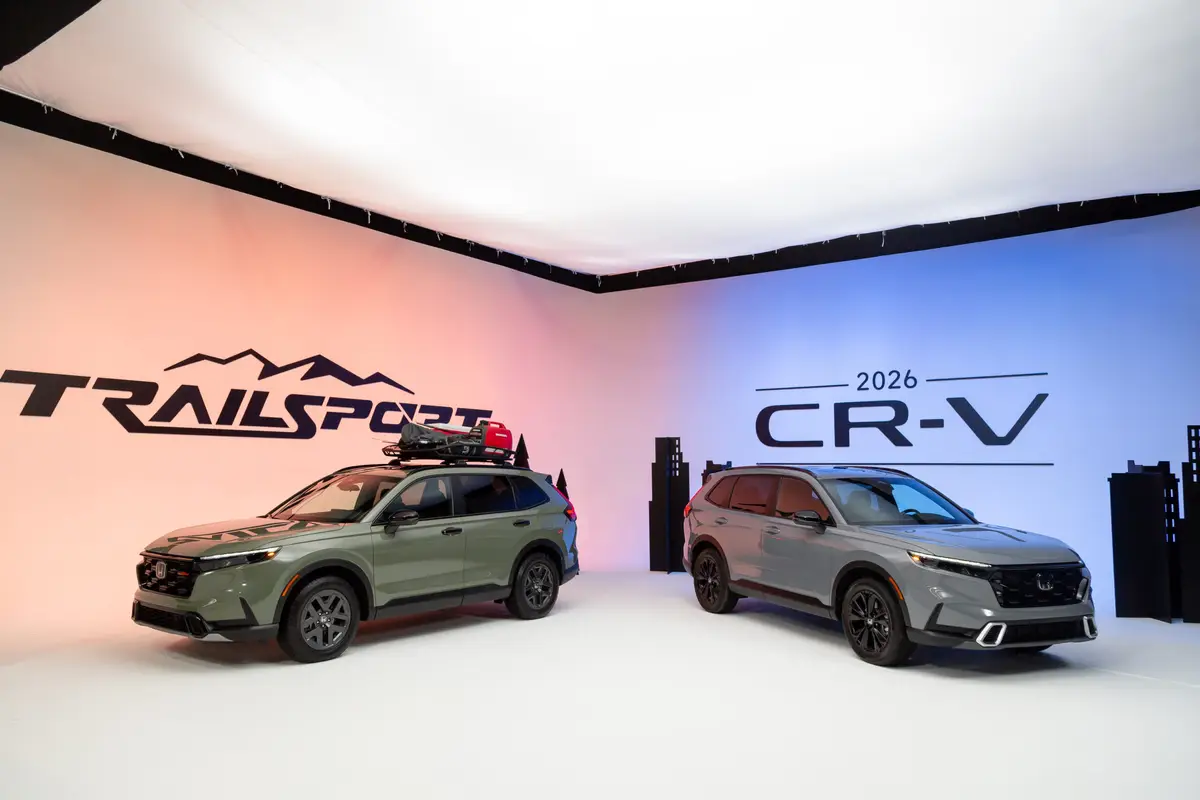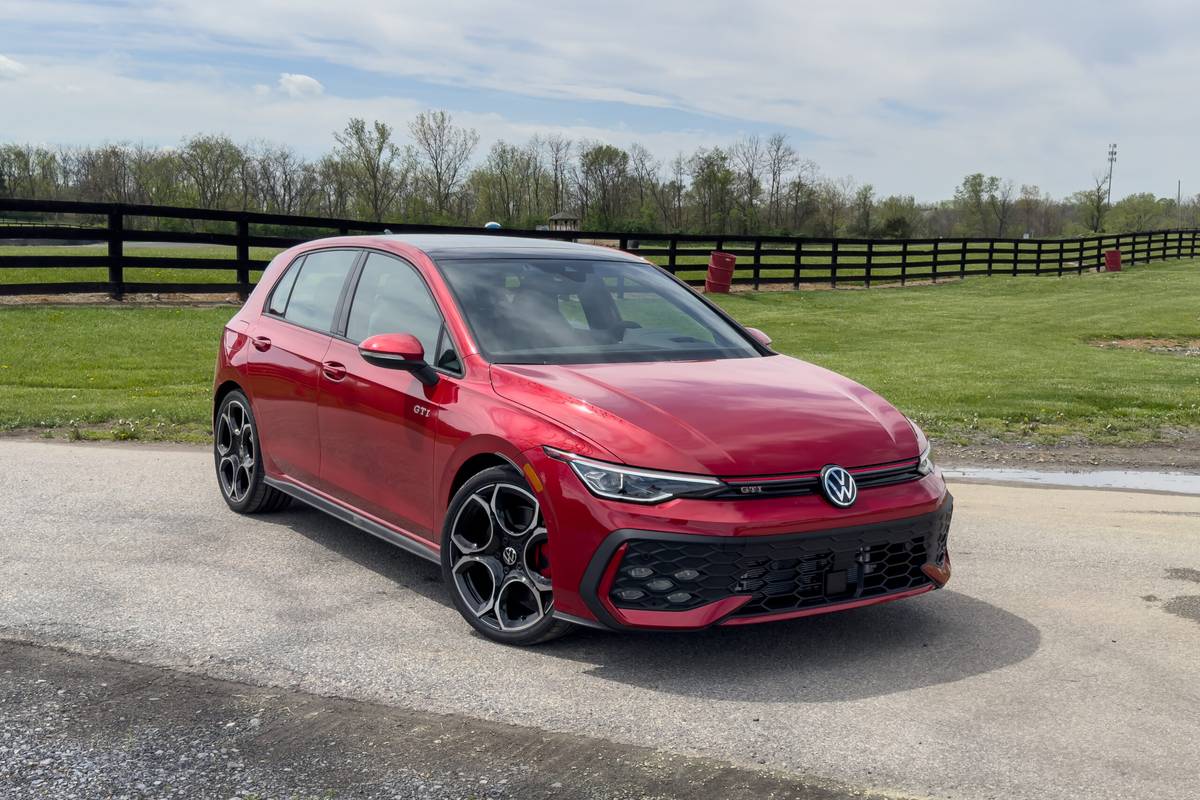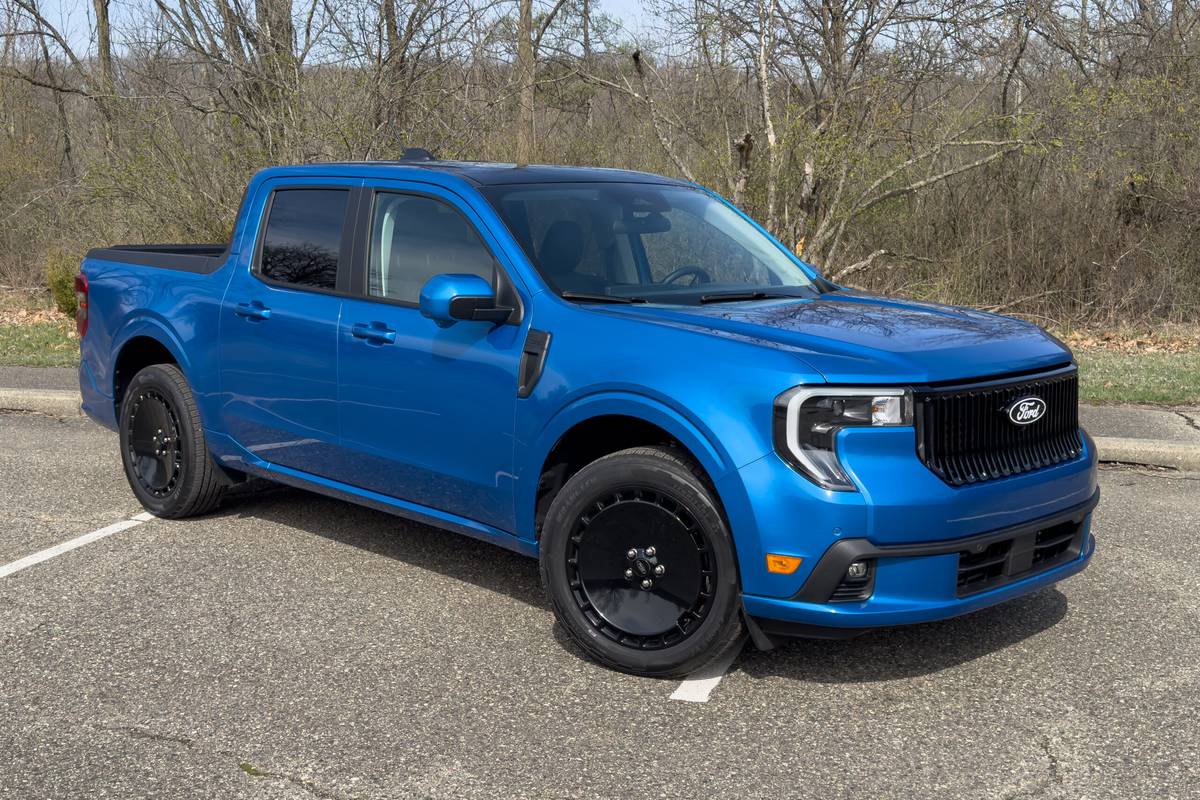Driving 3 EVs in Zero-Degree Temps: What Could Go Wrong?
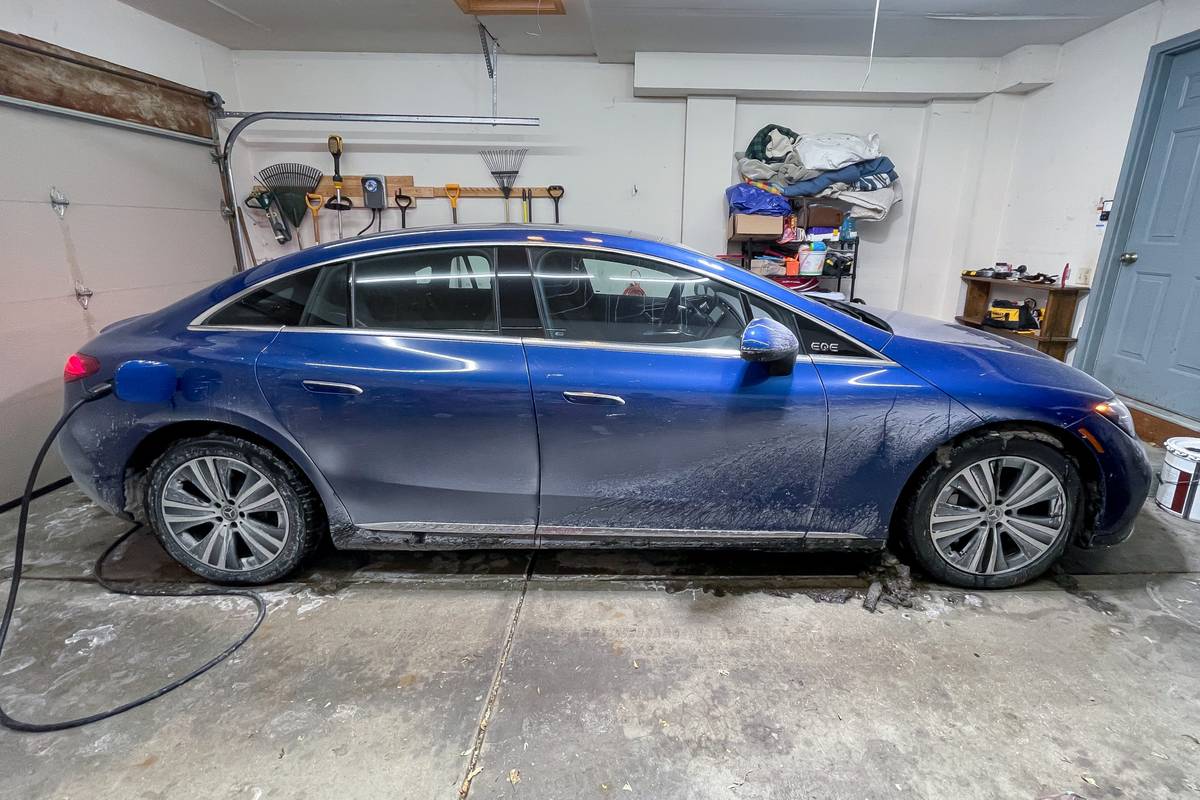
Electric cars don’t love cold temps, so when an arctic cold front blasted through the Midwest in late December with zero-degree Fahrenheit high temps and negative-40-degree wind chills with 50 mph winds, we wanted to report our experiences living with a Mercedes-EQ EQE350 Sedan, Tesla Model Y and Hyundai Ioniq 5 in unfavorable conditions. As expected, electric driving range was devastated, though it didn’t stop drivers from road-tripping the Model Y and Ioniq 5. The cold weather, however, affected more than just range.
Related: How Well Do Electric Cars Work in Cold Weather?
About the cars: The Model Y Long Range AWD is Cars.com’s long-term test car that we’ve owned for more than a year, while the EQE350 Sedan 4Matic was in our regular review fleet and the Ioniq 5 is owned by Cars.com Editor-in-Chief Jennifer Newman, who reported her family’s road trip experience in the frigid temperatures.
Joe Bruzek, Managing Editor: 2023 Mercedes-EQ EQE350 Sedan 4Matic

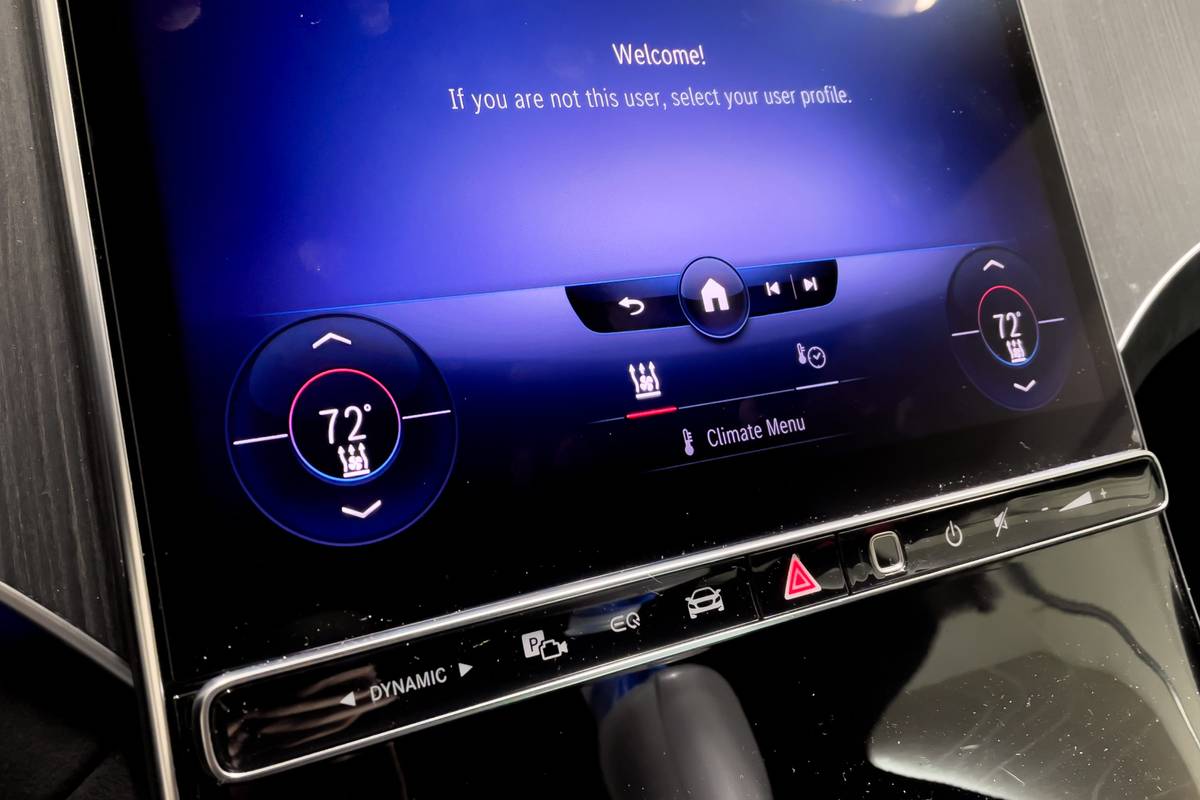
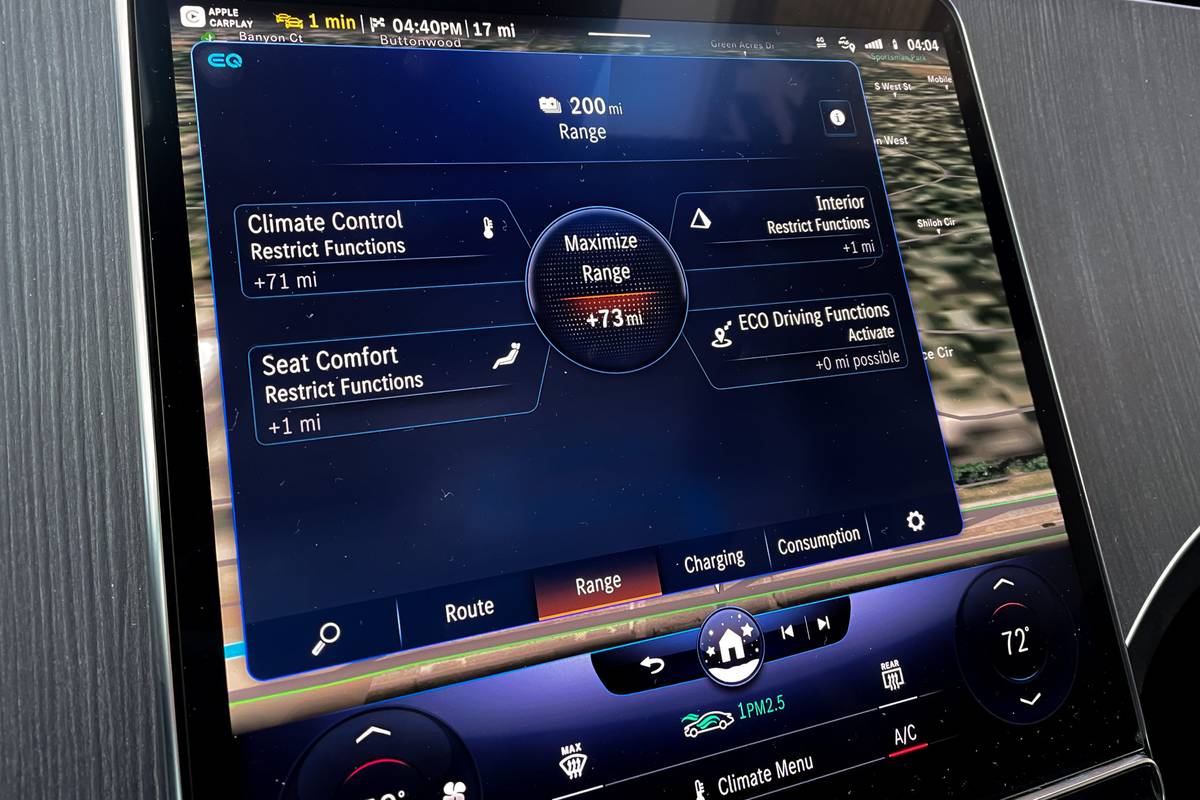
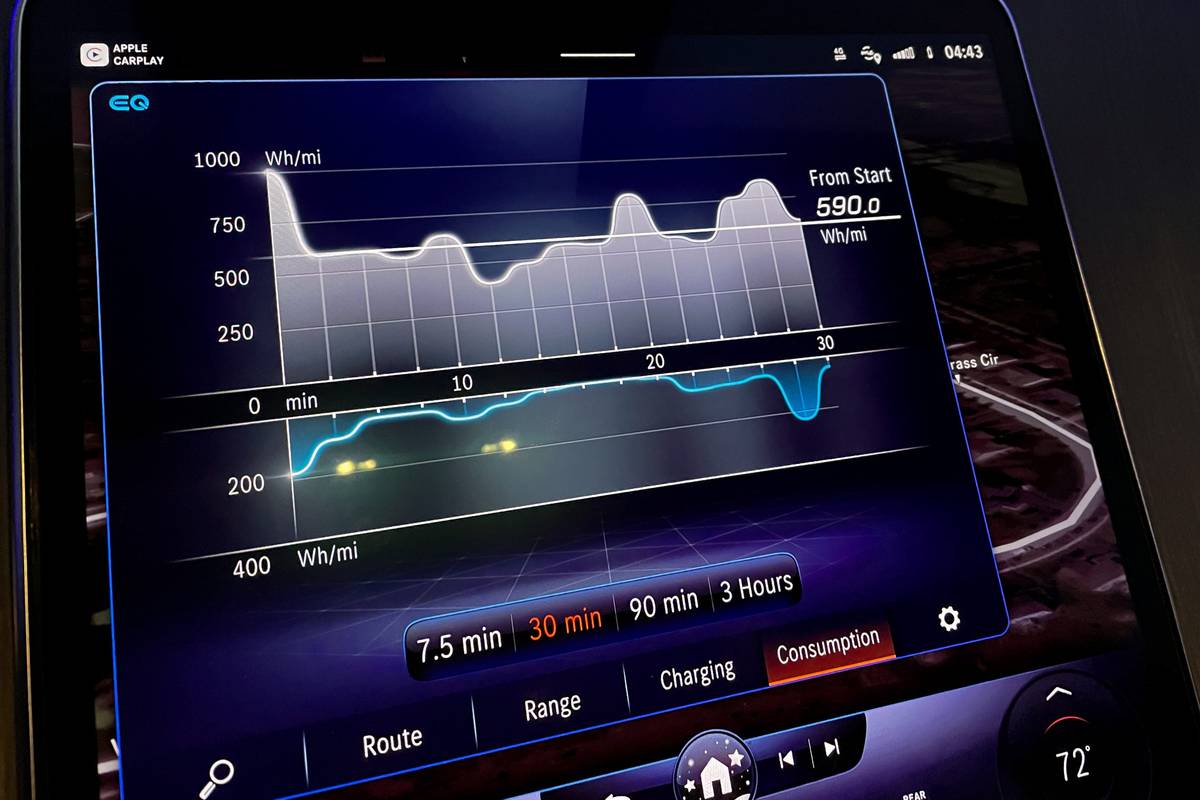




I was excited to cart the family around in the EQE Sedan for the holiday break because despite the typically shortened driving range of EVs at highway speeds, driving one on the highway is exceedingly pleasant thanks to minimal vibrations and no buzzing internal-combustion engine to disturb the trip. Plus, our initial reporting had praised how well the Mercedes EV drove.
But on the day of the cold snap, with the ambient temperature hovering around zero degrees and violent wind gusts reaching 50 mph, the EQE350 Sedan used nearly a third of its battery (31%) to travel only 40 miles — ouch! It’s normal for EVs to suffer temporary range degradation in cold weather (the Model Y and Ioniq 5 did, too), but I was still taken aback by how quickly the EQE was consuming energy.
I had even preconditioned the car while connected to a Level 2 charger in my garage in an attempt to alleviate the effects of cold weather. This also added a check mark in the “pro” column of living with an EV during the winter because I could remote-start the car and leave the garage door closed while strapping the kids into their child safety seats, unlike when warming up a gasoline-powered car.
The trip started with 216 miles of predicted range at 100% charge, down from the Mercedes-estimated maximum range of 260 miles for the all-wheel-drive EQE350 Sedan. But it dropped fast once out in the elements, and I ended the round trip with 130 miles of predicted range at 69% charge, meaning the EQE Sedan used 86 miles of predicted range to travel 40 miles of actual distance, averaging 1.63 miles per kilowatt-hour between the two trips. (The EQE Sedan’s battery can store 90.6 kWh of energy.)
While this rapid evacuation of the driving range was alarming, I also had to remind myself that at the end of the day, the EQE Sedan would be back home charging for the next day’s adventures. The drop in range would have been more unnerving if I were traveling longer distances, however, and also because on-the-road DC fast-charging times are often longer in colder temperatures.
I was pleased with how the EQE Sedan communicated driving range by showing how much range you can save by turning off the climate control, heated seats or switching to economy-minded driving modes. Climate control was always the main culprit in energy consumption and would have added 71 miles of predicted range if I turned it off during my trip.
What was reassuring was that even in the heavy winds and icy roads, the car’s driving dynamics exuded the utmost confidence; with its fitted winter tires, it was sure-footed.
What was unfortunate is that the EQE Sedan’s center 12.8-inch touchscreen, which houses climate and other important vehicle controls, completely froze (as in locked up) at the start of the return trip. With the car registering an ambient temperature of negative 1 degree and the screen unusable, I couldn’t precondition the cabin via the touchscreen like I did at home (an owner would have likely been able to use the mobile application to start the vehicle), nor could I turn up the heat once on the road, as it was fixed at 72 degrees and reluctant to blow air with any intensity.
Restarting the car didn’t fix the screen, but we eventually figured out how to reboot the EQE Sedan’s frozen touchscreen: Hold the physical power button long enough until the screen reboots. This let us regain control of the climate system so we could crank the heat. It was reminiscent of the headaches created by our Model Y’s touchscreen when it freezes because, like the EQE Sedan, it locks out climate and other important controls and displays when the screen becomes unusable.
While this was a pre-production unit that could have more stability in production versions, prospective EQE Sedan owners might want to be familiar with the reboot procedure because it’s not outlined in the owner’s manual. You could also avoid the situation altogether by buying a car that doesn’t incorporate important controls into its touchscreen; the EQB compact SUV would be a good alternative EV within the Mercedes family. And beyond Mercedes, an all-electric sedan like the Genesis G80 Electrified is a compelling alternative to the EQE Sedan.
Jennifer Harrington, Senior News Editor: 2021 Tesla Model Y Long Range AWD
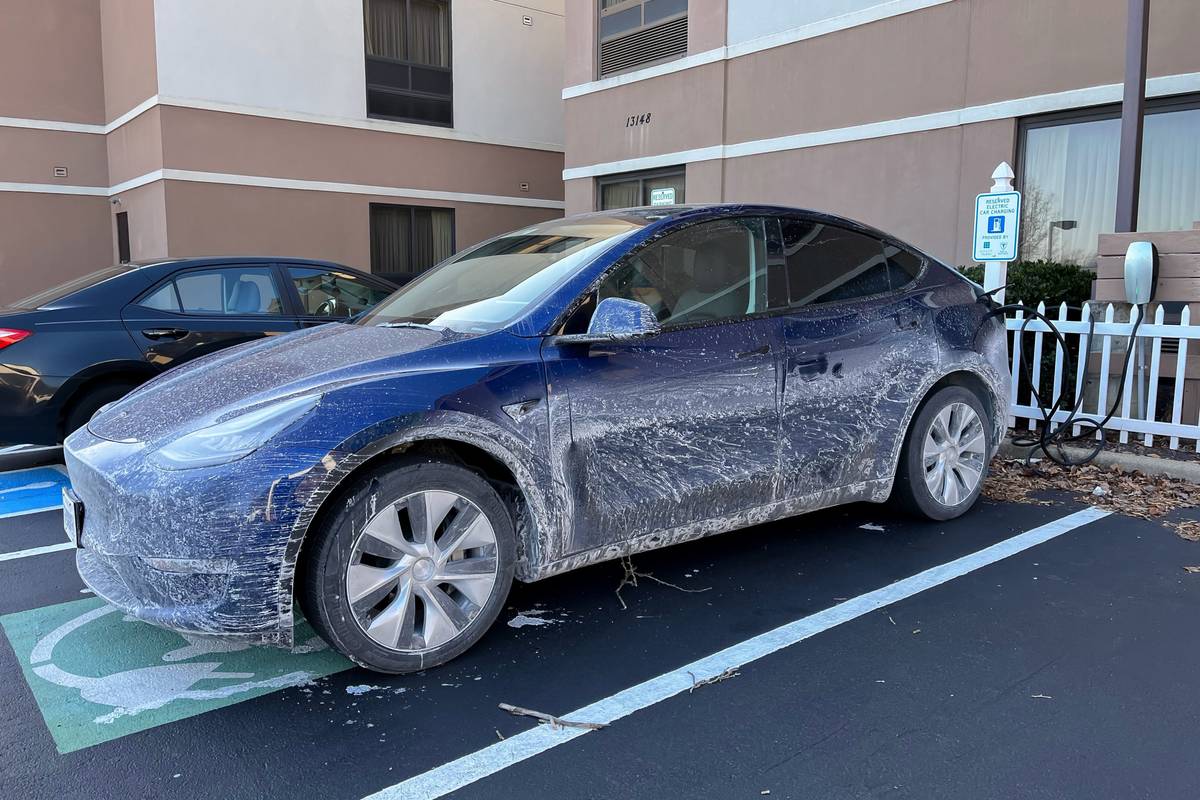
Originally, we planned to leave for the Richmond, Va., area on Friday morning to start our roughly 600-mile trip, but the week before Christmas, the forecast was calling for single-digit temperatures. Not wanting to start a long day of driving the Tesla when it was 5 degrees, we decided to head out Thursday afternoon instead and booked a room in Charleston, W.Va., conveniently located across the street from a Supercharger station. I’m glad we did because the Louisville, Ky., area from which we departed got hit with a few inches of snow Thursday night. When we got into Charleston, we charged up during dinner, then drove over to the hotel and called it a night.
It was a good thing we charged then. We woke up to a dusting of snow and a whopping 3 degrees the next morning. During breakfast, I started preconditioning the Tesla, but when we got out to the car and loaded it up to go, we found the door handles were frozen. The Tesla app offers the ability to pop a door open — but it only works for the driver’s door.
After getting inside, the Model Y wouldn’t register that the driver’s door was closed, and it took a couple of tries of almost slamming the door shut to get it to recognize that it was. The passenger-side door, on the other hand, wouldn’t close at all and just bounced off the door frame. I had to convince my husband to almost slam the door shut, and when he was finally successful, the car wouldn’t recognize his door was closed, either. A few more slams and we were finally able to get rid of the annoying beeping that comes with an ajar door. The passenger window also wasn’t lowering when closing the door, so for a while, there was a little bit of wind noise while going down the interstate as the window was cocked out of place. It remedied itself at our next charging stop in Mount Hope, W.Va.
Throughout the trip, range anxiety did kick in a bit, especially with the frigid temperatures and going through the Blue Ridge Mountains. We ended up stopping for charges more often than the Model Y suggested — at times stopping at each Supercharger station along the way. At one point, the navigation said there were about 170 miles to the next Supercharger station and that we would get there with 11% battery left, but after doing the math with the car’s energy app, it looked like we would’ve gotten there with negative 30 miles of range. After attempting to get the navigation to recalculate the route, I ended up just adding a Supercharger stop before the original stop.
We stopped at Supercharger stations five times along the way during the 600-mile drive, starting with an initial Supercharging session prior to departing, and averaged 118 miles between charging stops. We also spent an average of 32 minutes charging the Tesla at each stop, which added an average of 47.4% to the battery.
Overall, the trip, which normally takes about nine hours, ended up at a total of 12 hours including the charging stops.
Jennifer Newman, Editor-in-Chief: 2022 Hyundai Ioniq 5 Limited AWD
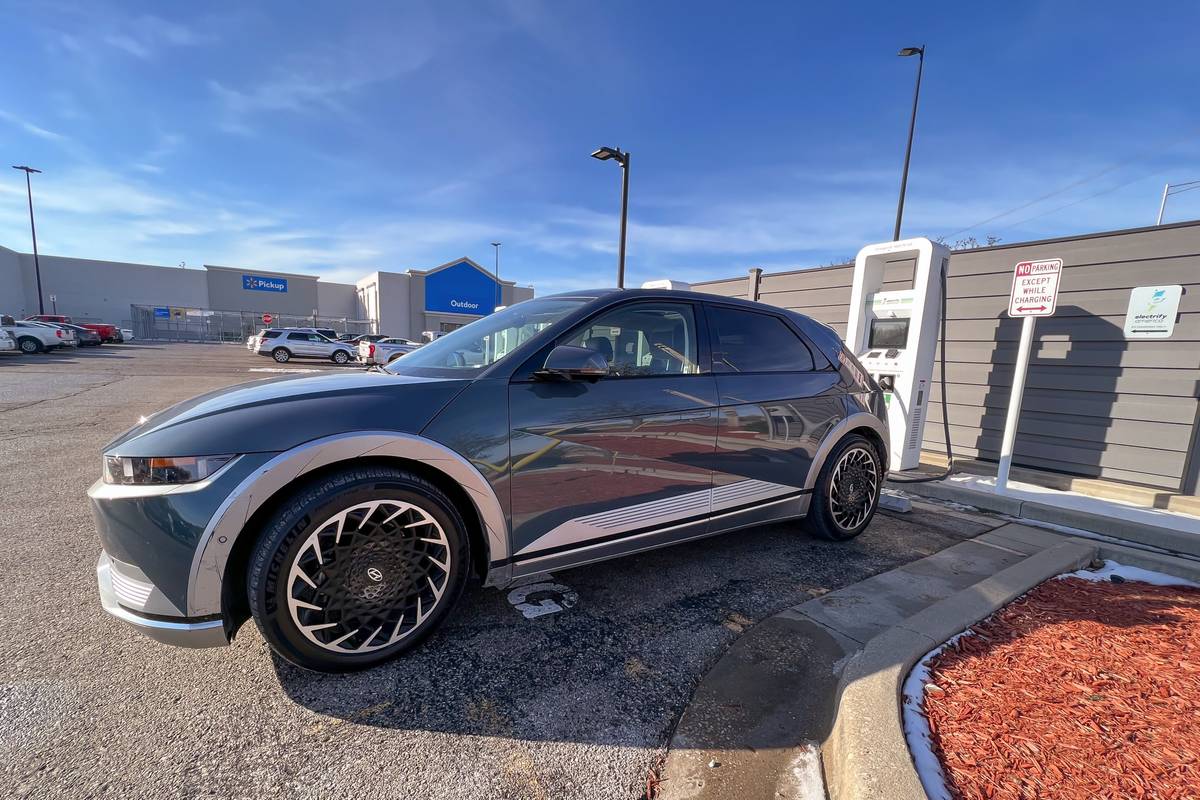
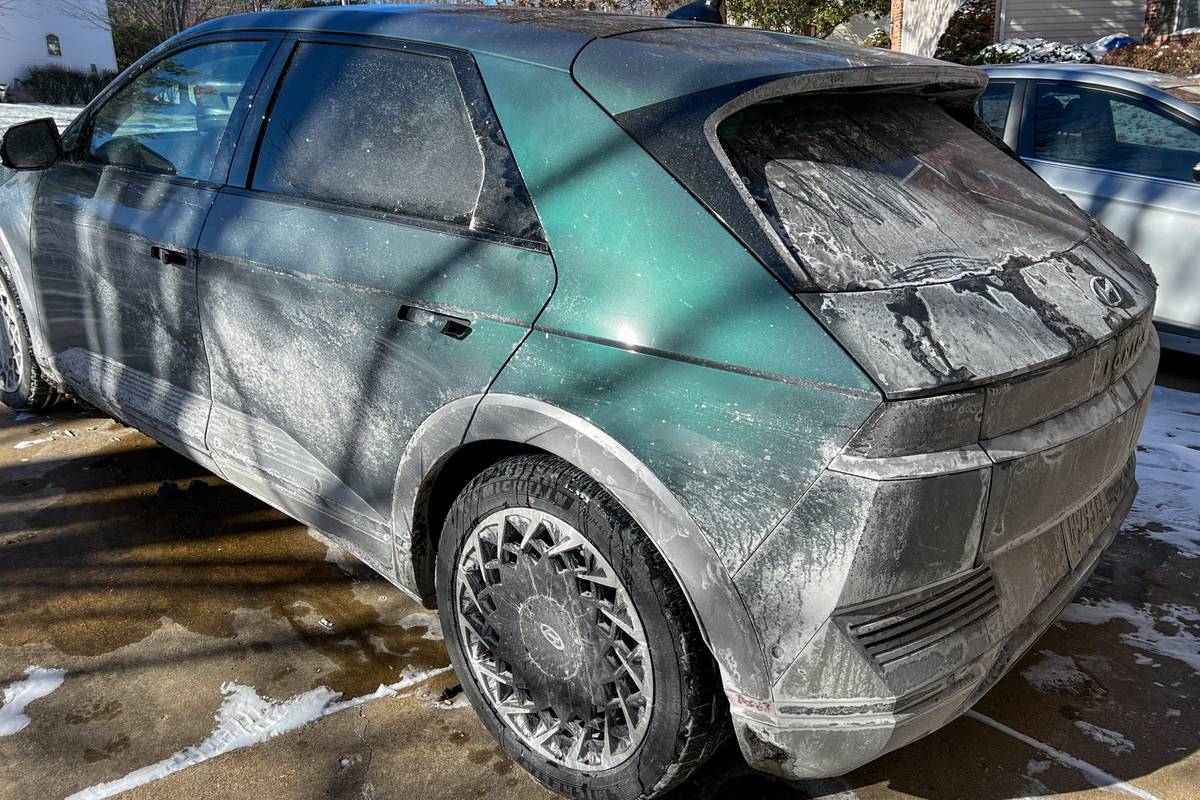


My husband went out mid-morning Dec. 23, the day of the cold snap in Chicago, to test whether our Ioniq 5 would have any issues charging at a DC fast charger. It took three attempts to find an open, non-buggy DC fast charger at a bank in the Logan Square neighborhood. He plugged in and it charged, but the battery was too cold to take a rapid charge. At the time, our Ioniq 5 didn’t have battery preconditioning enabled; we’ve since had our Ioniq 5 in to a dealer to get the update that allows for battery preconditioning. Also, it should be noted that our EV is currently with the dealer to get a “wiring module” replaced (we have no idea what that is). We’re not sure if that affected charging for this road trip.
The family hit the road with four adults (or near adults) and their luggage, but with less than 90% charge. There were probably 600-700 pounds of people and another 100-200 pounds of luggage in the car. We’d hoped to get to 100% before leaving our home, where we plugged in with our Level 2 charger. We targeted the 350-kilowatt Electrify America chargers in Joliet, Ill., (56 miles away) as our first charging stop on the way to Ballwin, Mo. (327 miles away).
We plugged in at Joliet but didn’t get above 50 kW at the station (the car’s fastest charging claim requires 250 kW). It was brutally cold with a whipping west wind, and we weren’t able to warm up the battery sufficiently (normally done by putting it in Sport mode and engaging one-pedal driving). The family stayed at the Joliet charger for 50 minutes, but the Ioniq 5 never got up to 100%, which turned out to be a theme of the entire trip.
On this road trip, the Ioniq 5 only achieved max charging speeds during the last few minutes of a charging session due to the cold; with the most power of 138 kW (except for one 150-kW charging station, all were 350-kW chargers). While no one in the car claimed to feel range anxiety, we intermittently turned off the car’s heat to try and preserve energy and increase efficiency; we were averaging mid-1s to 2.1 miles per kWh max. For reference, an Ioniq 5 returned 3.1 miles per kWh in a highway range test during Cars.com’s comparison test of the Ioniq 5 AWD and Tesla Model Y.
This trip was quite different from our summer road trip to St. Louis, which took us around six hours. I’ve done the drive in just under five hours in a gasoline-powered car; this Christmas drive took about 10 hours. Other than the crappy weather conditions, driving the car was great. It was quiet and handled well.
More From Cars.com:
- Our Tesla Model Y in Cold Weather: How Was Range Affected?
- 2023 Mercedes-EQ EQE Review: Smaller Size, Same Issues
- 2023 Hyundai Ioniq 5 Gets More Range, Equipment, $1,500 Price Increase
- 2022 Hyundai Ioniq 5 Review: The EV We’ve Been Waiting For
- Tesla Slashes Prices as Much as 20% Across Lineup
Related Video:
Cars.com’s Editorial department is your source for automotive news and reviews. In line with Cars.com’s long-standing ethics policy, editors and reviewers don’t accept gifts or free trips from automakers. The Editorial department is independent of Cars.com’s advertising, sales and sponsored content departments.
Featured stories
